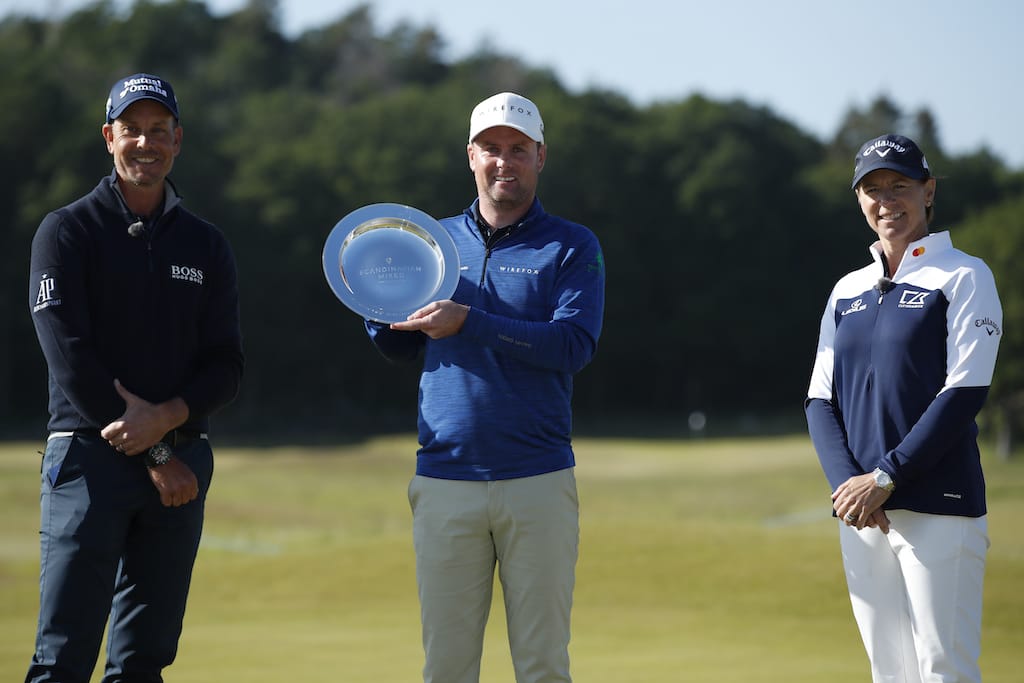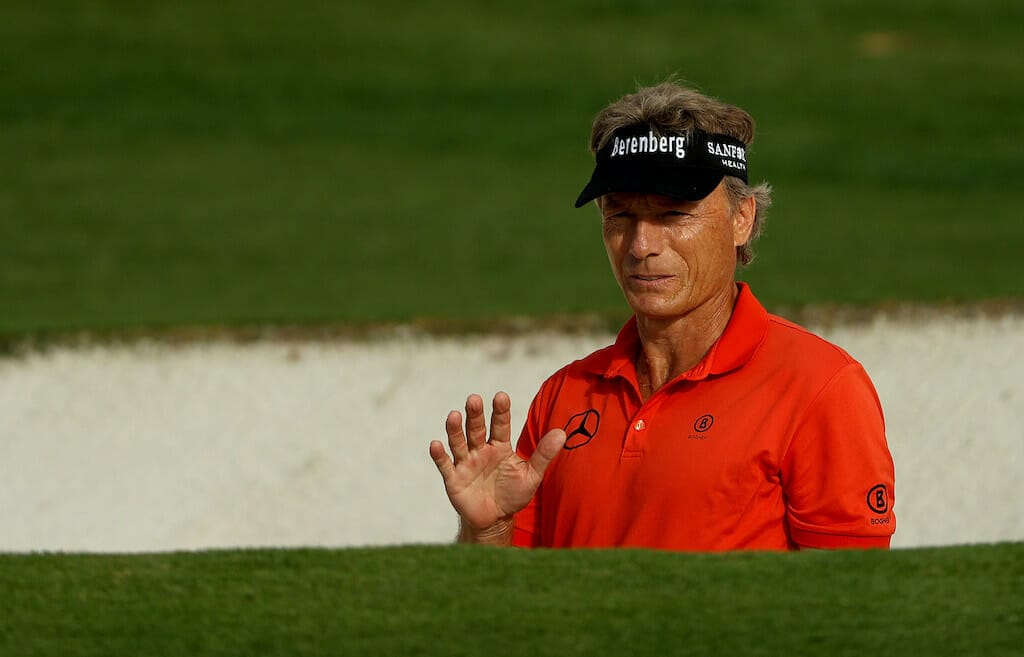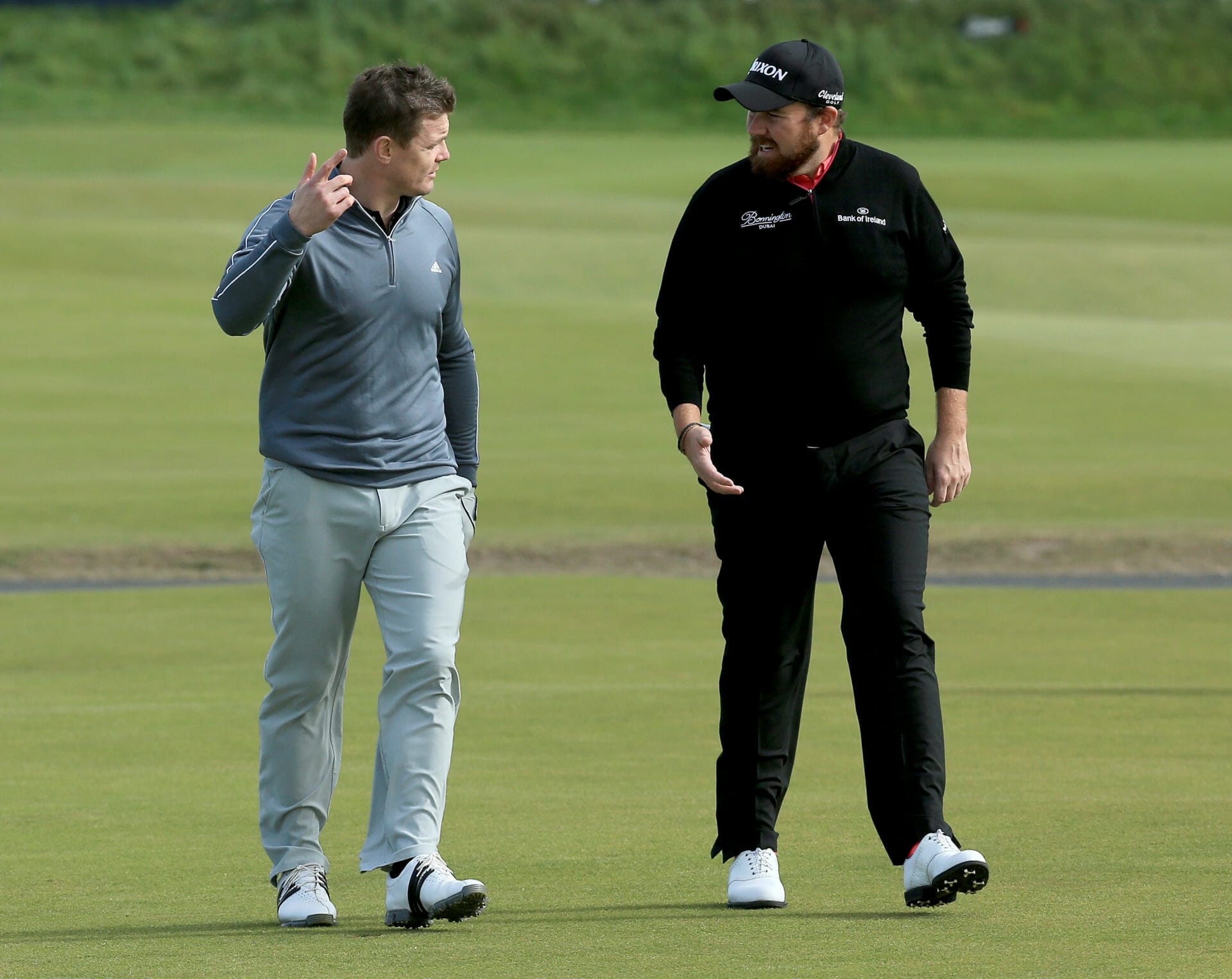Ever since the game of golf was first played over 250-years-ago, and throughout the years, decades and centuries through which the sport has travelled, there has always been two distinct versions of the royal and ancient game and change has been, for the most time, glacial.
First, there’s the bedrock of the game of golf, some 75m – 80m of us ordinary mortals struggling to varying degrees to make something of what is without question, one of the most challenging of leisure-time pursuits, navigating not only the elements and the multiple hazards of the surroundings in which we play, but also mastering to a greater or lesser extent, the 14 implements we are permitted to deploy in our never-ending quest to guide a tiny white spherical object from start to finish with the least number of blows possible.
Then, there is the opposite end of the golf spectrum; the elite end of the game as practiced by a few thousand professionals around the world; those fortunate souls, gifted a God-given talent that can, almost invariably along with hard work and dedication to their cause, lead to previously unimaginable fame and fortune.
Professional golf may have been around as a significant sport for a quarter of a millennium and counting, but in as far as we know it today, as the European Tour, now officially known as the ‘DP World Tour’ celebrates its 50th anniversary – the PGA Tour in the USA is four-years-ahead, having observed its Golden (50th) Jubilee back in 2018 – in its outward-facing profile, it looks worryingly similar to what was on offer back in the 1970s, through to the end of the 20th century and into the early years of the 21st.
Sure, prize money around the world has increased exponentially and proportionately – in large part due to the sheer force of nature that was
Eldrick Tont ‘Tiger’ Woods, arguably the best (and if not, then certainly one of the five very best) exponents of the game of all time, and – perhaps unsurprisingly given the professional circuits are in effect members’ organisations acting in the best interests of its players – the pay and working conditions for golf’s crème de la crème have improved out of all recognition.
Prize money has risen year-on-year; from a mere €360,000 on offer over a 25-tournament season across just 10 different countries in 1972 to €100m in 2020 before almost doubling to around €200m this term, the DP World Tour, like the PGA Tour to a greater extent has offered ever-increasing prize money – plus ballooning appearance fees for the chosen few, taking golf into the upper echelons of the most valuable professional sports in the world.
And the lot of the average Tour player has improved out of all recognition; in the early years of the European circuit, players got around an admittedly less geographically-demanding season in a variety of ways, the millionaire lifestyle it was not.
Ian Woosnam travelled around Europe in a VW campervan, most players would room-share with friends and rivals, public transport and multiple-occupancy taxi rides from airport to guest house or basic level hotel and golf course. Sam Torrance fondly talks of carrying his ‘shag bag,’ of practice balls from event to event, a far from glamorous existence, relatively lucrative for some, just about viable for many, unsustainable for those who could not cut the mustard before heading back to safer and steadier club pro jobs, their shop and teaching duties the paradox of the globetrotting lifestyle many top professionals enjoy today.
1988 and the introduction of the over-arching Tour sponsorship by Swedish automotive brand Volvo, backing not only several tournaments each year – including the flagship Volvo PGA Championship and the season-ending Volvo Masters – and the all-enveloping Volvo Order of Merit changed everything for the Tour rank-and-file, and for the better.
Player services taken for granted today, courtesy cars between airport, hotel and golf course, players’ lounges, full-service practice facilities including brand new practice balls, and physiotherapy all became the norm, even charter flights, subsidised or free accommodation, caddie lounges and family-friendly creches are commonplace, the lot of the touring professional has evolved into a relatively smooth way of life enabling players to focus on what they do best, playing tournament golf.
But, while prize money and player ‘perks’ have escalated beyond what would have been a seventies or eighties player’s wildest dreams, those bearing the exponentially increasing cost, tournament sponsors are, 50-years on from the European Tour’s somewhat homespun beginnings, enduring much the same benefits they were granted half-a-century ago.
TV coverage, albeit more expansive and technically sophisticated remains pretty much the same, ever-expanding hospitality facilities for invited guests remain in principle the same, the pre-tournament Pro-am, the opportunity for customers and clients to enjoy as close to the Tour experience as their game will allow, playing with a top player – some more intent on fine-tuning their game pre-tournament than engaging with their paymasters – over the championship course, all much as it was, admittedly to a greater extent as it was back in the day.
In truth, the arrival and subsequent explosion of the Internet, which many tournaments were slow to engage with, and even now some make only marginal use of the online experience, and subsequently social media are the only areas where sponsors have been able to leverage more extensive coverage and add value to the ever-expanding fees being demanded of them, perhaps explaining the considerable ‘churn’ in recent years, with only diehards such as BMW, Rolex and Omega, Dunhill and Volvo staying the course.
Even, in this technologically-advanced era, golf is yet to embrace the electronic digital advertising boards now commonplace pitchside at even relatively low-level football and rugby matches, whilst pre-tee-off interviews and mic’d-up players and caddies during play, the exception rather than the rule.
72-hole stroke play tournaments remain the order of the day, same-old, same-old, innovations such as the ‘Shot Clock Masters’ – a device to help combat the scourge of slow play, national events such as the European Championships, the ‘Super 6’ format designed to add knock-put drama to a tournament climax have all come and gone, as has the introduction of amateurs – sponsors’ guests – into the main tournament playing with the pros.
Apart from the potentially-exciting and ground-breaking Volvo Car Scandinavian Mixed Hosted by Henrik & Annika, to be played in Sweden in June, and the longstanding WGC Matchplay in the USA in March, each and every one of the 44 European Tour events in 2022 are 72-hole stroke play tournaments, the IMG-owned World Matchplay Championship, incomparable in its Wentworth pomp in the sixties, seventies and eighties and exhumed by Volvo between 2009 and 2014 has lost its sparkle, its sponsors and its slot in the schedule.
Always an innovator, Volvo, an ever-present on the European Tour since 1988 also introduced a much-needed Champion of Champions tournament reserved only for the winners of the previous season’s events, including a ‘Playing with the Pros’ format that saw clients and customers joining the pros for part of proceedings fell by the wayside after a promising four-year run when the Swedish automotive brand pulled back much its sponsorship.
At least the PGA Tour recognises the need for some sort of variation on the theme, the AT&T Pro-am, the WGC Match Play, the Zurich Classic and the QBE Shoot-out, both pairs’ events and a brain-scrambling format for the end-of-season Tour Championship show a willingness to break-up the grinding monotony of yet another 72-hole stroke play event involving many of the same players competing on lookalike manicured TPC-style courses, Thursday to Sunday.
Of course, the Ryder Cup, the Solheim and the Presidents Cup break the mould and reveal just how dynamic and dramatic team golf and match play can be.
Yet when offered its greatest ever opportunity, a global showcase at the Olympic Games, the so-called, ’Greatest Show on Earth,’ the golf authorities, the USGA, the R&A, the International Golf Federation (IGF) and the all-powerful PGA Tour opted for the tried-and-tested 72-hole stroke play configuration, when other relatively recent Olympic sports such as tennis have shown just how powerful the knock-out individual and national format can be.
Sadly, alternative formats have fallen by the wayside; interestingly the U.S. PGA Championship, one of the four ‘Majors’ in the men’s game was once – between 1916 and 1957 – a match play tournament before switching to yet another same old, same old set-up, just like the Masters, the US Open and the Open Championship.
And, saccharine-coated and self-serving though it was, the annual Tavistock Cup, a two-day, charity-based event played in Florida between the residents of the local golfers’ gated communities of Lake Nona and Isleworth was certainly different and popular until it too fell by the wayside in 2013.
But interesting it may be to take a glimpse into the future, the PGA Tour’s PNC Championship, won last year by former ‘wild child’ John Daly and his son of the same name, with Tiger Woods and son Charlie runners-up is little more than a gimmick, a schedule filler taking a slot where a more innovative and appealing match play or team event could be staged.
Despite studies and initiatives to rid the professional game of the scourge of slow play, pedestrian play remains at the heart of the PGA Tour, the European Tour and especially the LPGA, with five, six and even, on occasions, seven-hour rounds going unpunished, at least for those privileged few at the very top of the game.
Few will forget the highly-selective one-stroke penalty sanction against the then 14-year-old Chinese amateur Guan Tianlang making his Masters debut in 2013 while Tiger Woods, Bernhard Langer and serial offender Jason Day sauntered around Augusta National with no official bold enough to lay a finger, let alone a penalty stroke on any of the so-called ‘Marquee names.’
Meanwhile, players have railed against TV-led initiatives which are now commonplace in top-level professional sport such as football, rugby and tennis, such as pre-match interviews, mic’d-up golfers and flash interviews at the turn eschewing almost every innovation.
And as professional footballers endure the stress of taking penalty kicks in front of millions watching on TV and often hostile opposition fans baying for blood in the grandstands behind the goal, golfers are protected by over-zealous stewards waving ‘Quiet Please’ signs demanding peace and tranquillity as players size-up and execute their shots in complete silence.
Indeed, it is evidence of how sterile professional golf is, and how protected a species professional golfers are, that raucous galleries, many inebriated, on the 16th hole at the WM Phoenix Open at TPC Scottsdale make headline news, the authorities believing this is professional golf letting its hair down.
Similarly, the bizarre PGA Tour initiative, the crass ‘Player Impact Program,’ a scheme whereby Tiger Woods pocketed US$8m (€7.2m) for topping the social charts and Phil Mickelson a mere US$6m for second place after outrageous remarks made against the PGA Tour and in support of the beleaguered Saudi-backed Premier Golf League, surely that’s not a healthy or positive way for golf to draw greater attention to itself?
Bunker Mentality maintains the 2019 Open Championship at Royal Portrush was a breath of fresh air and raised the bar to a new and refreshing height in the context of what’s normal at professional tournaments in general and the ‘Majors’ in particular, especially the still somewhat stuffy R&A-run Open. Few will forget thousands of cacophonous Irish fans following Rory McIlory long into the evening as he tried – unsuccessfully as it transpired – to make the cut following a disastrous opening round.
Then, come Sunday, with Irish hero Shane Lowry taking – and holding on to – a commanding lead going into the final round, that was golf at its very best, fans engaging noisily with proceedings despite the ‘Quiet Please’ signs whilst still respecting the honour of the game and its protagonists.
So, what’s to be done to breathe new life into professional golf?
First, relax the rules to allow fans to fully express themselves, of course, without unfairly distracting or verbally abusing the players, but, like Messi or Salah taking a penalty in front of hostile opposing fans, let the Dustin Johnsons and Rory McIlroys of the game experience executing under ultimate pressure.
Secondly, crack down, properly, on slow play, not just penalty strokes but swingeing fines and, for repeat offenders, tournament disqualifications and subsequent tour bans.
Thirdly, and most importantly, the professional tours must show greater imagination and innovation going forward, especially in curtailing the number of bog-standard 72-hole stroke play tournaments that dominate the schedules.
And, while relatively meaningless Pro-ams take place week-in, week-out for the benefit of sponsors, surely an opportunity exists to stage, at least every two or four years, an authentic Pro-am, involving the highest ranked players on the OWGR and Rolex Rankings, either with, or against those currently in the unpaid ranks on the global World Amateur Golf Rankings (WAGR), to intriguingly compare the best of both worlds.
The seemingly disbanded World Cup of Golf, based not on which players choose to play, but mandatory participation – making it an aspiration, a privilege and an honour as in most sports – to represent their country, predicated upon Official World Golf Ranking (OWGR), moving annually from continent to continent to spread the word, especially in South America, Sub-Saharan Africa and Asia must surely be resurrected and backed by sponsors, governing bodies and, most of all, players.
And what about a biennial World Mixed Doubles Championship of Golf, again based on OWGR and, for the women, the Rolex World Rankings, showcasing the similarities and differences between men’s golf and women’s, again a peripatetic event, surely popular with TV, spectators and sponsors?
Meanwhile, surely both the European Tour and the Ladies European Tour were both onto a winner with their recent innovative Day / Night Floodlit tournaments in Turkey and Dubai respectively, original, inventive and different, qualities golf, whether it recognises it or not, badly needs.
The evergreen Dunhill Links Championship, celebrating its 20th staging this year is also a template for widening the current popular appeal of professional golf, top players chasing US$5m (Approx. €4.5m), competing alongside stars of stage and screen, pop music and professional sport, loved by fans and the media alike.
And finally, most people associated with golf believe the world needs another ‘Major,’ and, with three of the four already in the USA, Asia must surely be ripe for a fifth ‘Grand Slam’ event, and, without question, a match play format is long overdue since the PGA Championship pivoted to stroke play 65-years-ago.
Professional golf has, almost despite itself, gone from strength to strength since the various professional circuits broke away from their mainstream governing bodies, but, created by – and for – their members, it could be argued that they have focused on improving the lot of their ranks than developing the game.
Insular, focused, restricted and restrictive, closed shops, all adjectives that can be currently applied to the pro circuits; but, both within, and from outwith, given the many commercial agencies like WME / IMG, Octagon and Excel Sports Management active in the game, entrepreneurial imagination and innovation is needed like never before, the pro game having stalled following the global financial crisis and, more recently, the Covid-19 pandemic.
Professional golf is unlikely to wither on the vine, at least not any time soon, but it is in serious need of structural change, variety, modernisation and creativity if it is to flourish, fulfil its potential, compete and thrive in an ever-more challenging professional global sports market.





























Leave a comment